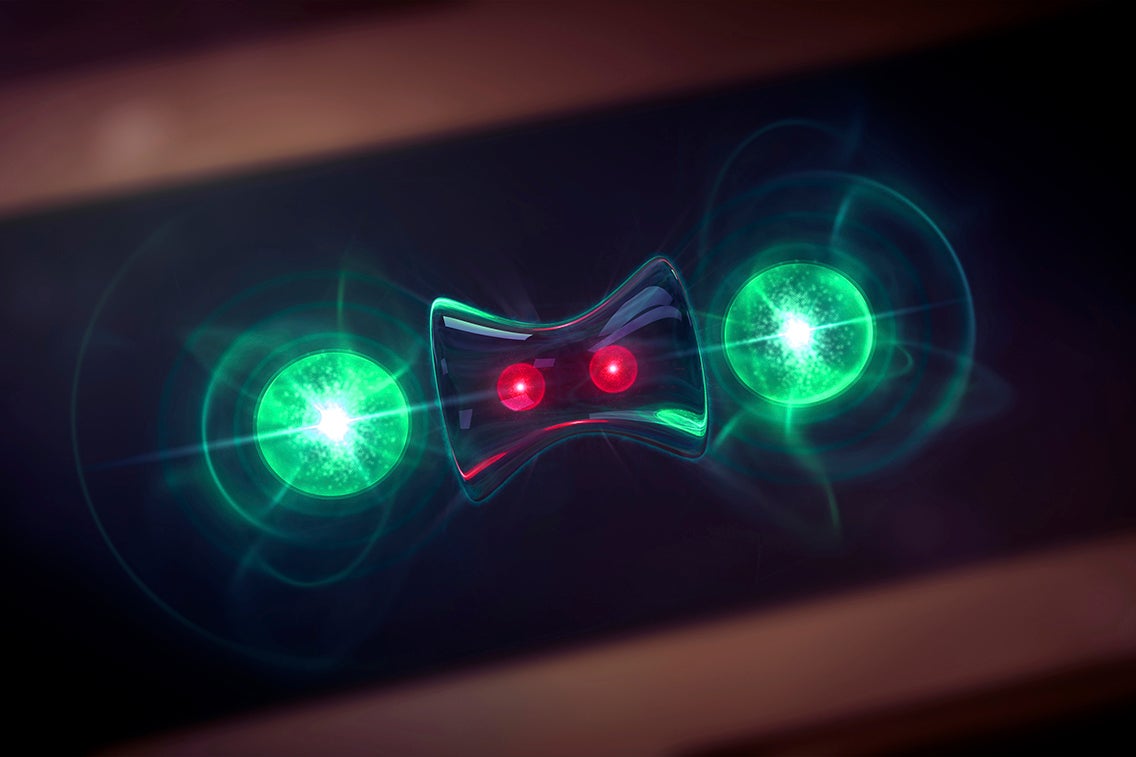
Studying quantum mechanics, which I’ve been doing for the last two-plus years, has served as an antidote to my tendency toward habituation, taking reality for granted. Wave functions, superposition and other esoterica remind me that this is a strange, strange world; there is a mystery at the heart of things that ordinary language can never quite capture.
I’m thus thrilled by this year’s Nobel Prize for Physics. John Clauser, Alain Aspect and Anton Zeilinger won for experimental probes of entanglement, a peculiar connection between two or more particles. The Nobel Foundation’s press release emphasizes the applications of this prize-winning work; researchers are building “quantum computers, quantum networks and secure quantum encrypted communication” based on entanglement. But I value the work of Clauser, et al., because it upends our commonsense notions about what is real and what is knowable. It rubs our noses in the riddle of reality.
Experts bicker over what entanglement is and what it means; philosopher of physics Tim Maudlin complains that the Nobel Committee for Physics misunderstands entanglement. My “understanding,” such as it is, begins with wave functions, mathematical widgets that describe the behavior of electrons, photons and other quantum stuff. Unlike, say, Newton’s laws of motion, which precisely track objects’ trajectories, a wave function tracks only the probability that an electron, say, will behave in a certain way. The probabilities undulate over time in wavelike fashion; hence the term.
When you look at the electron—measuring it with some sort of instrument—its wave function is said to collapse, and you see only one of the possible outcomes. That is strange enough. Even stranger is what happens when the wave function applies to two or more particles that start out conjoined in a particular way. Imagine you have a wave function describing a radioactive lump that emits two electrons at the same time. Call the electrons A and B.
Electrons possess a quantum property called spin, which is unlike the spin of a planet or top. Quantum spin is binary; it is either up or down, to use a common notation. Imagine if planets could only spin clockwise, or counterclockwise, with their axes pointed only at the North Star, and in no other direction, and you’re getting the gist of spin. Although quantum spin, like entanglement, makes no sense, it has been verified countless times over the past century.
Okay, now you let the electrons fly apart from each other. Then you measure the spin of electron A and find that its spin is up. At that moment, the wave function for both electrons collapses, instantaneously predicting the spin of electron B, even if it is a light-year away. How can that be? How can your measurement of A tell you something about B instantaneously? Entanglement seems to violate special relativity, which says that effects cannot propagate faster than the speed of light. Entanglement also implies that the two electrons, before you measure them, do not have a fixed spin; they exist in a probabilistic limbo.
Einstein objected to entanglement, which he famously derided as “spooky action at a distance.” Einstein felt that physics theories should possess two properties, sometimes called locality and realism. Locality says effects cannot propagate faster than the speed of light; realism says physical things, such as electrons, possess specific properties, such as spin or position, all the time and not just when we measure them. Einstein argued that if quantum mechanics violates realism and locality, it must be flawed, or incomplete.
For decades, the debate over entanglement was seen as purely philosophical, that is, experimentally unresolvable. Then in 1964, John Bell presented a mathematical argument that turned philosophy into physics. If your model of entanglement is based on locality and realism, Bell showed, it will produce results that differ, statistically, from those of quantum mechanics. This difference is called Bell’s inequality.
John Clauser, Alain Aspect and Anton Zeilinger put Bell’s theorem to the test, performing experiments on entangled photons and other particles. Their research has confirmed that the predictions of quantum mechanics hold up. The experiments dash the hopes of Einstein and others that causes and effects propagate in an orderly fashion, and that things have specific properties when we don’t look at them.
John Bell died in 1990, too early to see his ideas fully vindicated—or to share the Nobel Prize, which is not given posthumously. But he left behind a collection of influential papers, collected under the title Speakable and Unspeakable in Quantum Mechanics. Ironically, quantum theorists cite Bell’s utterances like scripture, even though his own views seem fluid, unsettled, riddled with self-doubt. He even disses his own inequality theorem, suggesting that “what is proved by impossibility proofs is lack of imagination.” Bell’s theorem is an impossibility proof.
Bell seems less intent on solving the paradoxes of quantum mechanics than on drawing attention to them. In a 1986 essay, he compares his fellow physicists to “sleepwalkers,” who continue to extend quantum theory while ignoring its “fundamental obscurity.” Given the “immensely impressive” progress achieved by sleepwalking physicists, Bell asks, “is it wise to shout, ‘wake up’? I am not sure that it is. So I speak now in a very low voice.”
Bell once said that quantum mechanics “carries in itself the seeds of its own destruction.” He, like Einstein, seemed to hope that quantum mechanics would yield to a more sensible theory, ideally one that restores locality, realism and certainty to physics. My guess is that if we find such a theory, it will eventually turn out to be mysterious in its own way. The mystery might be unlike our quantum mystery, but it will still be a mystery, which cuts through our habituation and forces us to pay attention to the weird, weird world.
This is an opinion and analysis article, and the views expressed by the author or authors are not necessarily those of Scientific American.
